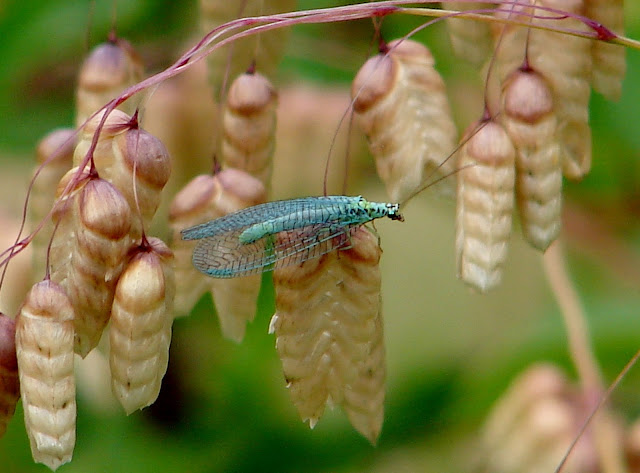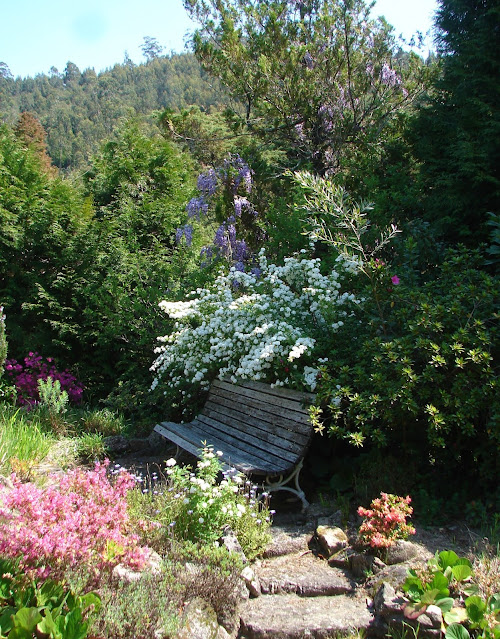Historically and cross-culturally, ladybirds or ladybugs are believed to be a talisman of good luck. Some believe that if a ladybug lands on you, you should count the number of spots to predict how many years of good luck you will have, and many think that the spots indicate the number of months until your greatest wish comes true. As a child, my parents told me that the ladybug was lucky, and as a child I believed them. Whatever you may believe, they do play an important role in the environment, and are "charming" little creatures.
These charming little red and black creatures, are not bugs at all, but beetles, and are harmless to humans. The seven spot is the most common. It has 3 spots on each side of it's body, and 1 behind it's head. Their spots serve as a warning to predators.

Ladybugs can eat as many as 75 aphids per day, and up to 5000 insects in it's lifetime. As you can see in this photo, they can have a veritable feast on this branch.
They have small black feet and black antennae, and they smell from both antennae and feet.Their wings are hidden behind the hard dome shaped body.
Their spots and bright colour is not the only warning devise the ladybird has. They emit foul-smelling blood from their leg joints, and when they are startled, the yellow liquid is ejected out, and is toxic to it's predators.
Like the lacewing, and many other insects, they are the farmers and gardeners friend, for their preferred diet is plant damaging insects, and they also love pollen, and pollinate as the fly from flower to flower.
Last year I saw many 7 spot ladybirds, but there are about 5,000 different species of ladybugs in the world, and many are known by the number of their spots.
Children love ladybugs, and there is a popular children's nursery rhyme, written in the 17th century called "Ladybird Ladybird", No-one really knows who wrote it,but it goes like this.




















